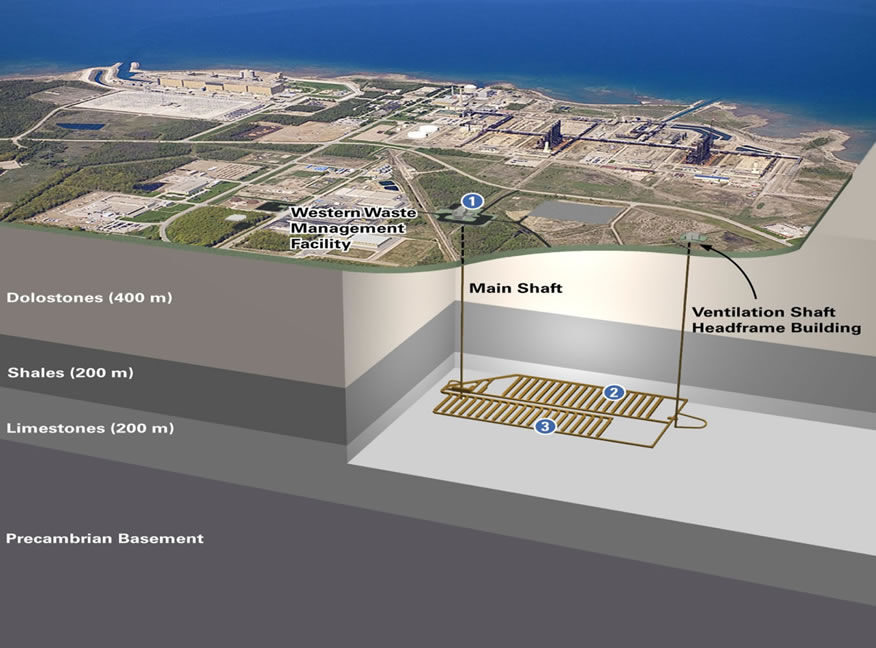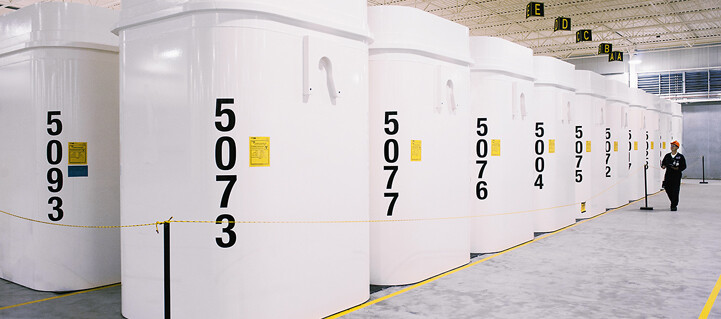Spent Fuel and Nuclear Byproducts
Spent fuel — the uranium that has powered nuclear reactors — makes up about three per cent of the volume of nuclear waste worldwide. The total amount of spent fuel bundles in Canada would fill about six hockey rinks to the height of the boards.
The remaining 97 percent is made up of other materials, including cleaning equipment (such as mops), protective clothing, and operational equipment, such as water filters.
Facilities that handle or transport spent fuel and nuclear by-products — including nuclear power plants, mines and medical facilities — are licensed or overseen by the Canadian Nuclear Safety Commission (CNSC). These facilities must comply with all applicable regulations and licensing conditions.
In addition to CNSC licensing, the facilities for storing spent fuel are also monitored by provincial and federal authorities, as well as international organizations such as the International Atomic Energy Agency (IAEA). As an added layer of protection, Health Canada monitors and issues reports on radiation exposure of workers in these facilities. The costs of waste-management facilities in Canada are borne by the producers and owners, rather than the taxpayer.
Deep geological repositories

Storing waste above ground is safe, but it requires ongoing monitoring and security. An alternative method for keeping nuclear waste safe is to bury it deep in the ground, in dry rock that is resistant to earthquakes. This is referred to as a deep geologic repository.
A DGR for low- and intermediate-level waste may be the best solution. Ontario Power Generation is reviewing its options and may plan broader community consultations before selecting potential sites.
For spent fuel, a DGR is also the widely accepted best solution, but selecting a site will require more care. This task falls to the Nuclear Waste Management Organization (NWMO). Established in 2002, the NWMO is solely concerned with the management of nuclear waste. It neither advocates for nor against nuclear power.
The NWMO’s plan for selecting a DGR is called Adaptive Phase Management, which aims to find a site with suitable geology and a willing host community that understands both risks and the benefits. These may include employment and training opportunities, as well as financial benefits. A site will not be imposed on any community.
The process for selecting a spent fuel storage site started in 2010, with 22 communities and First Nations expressing interest. As of 2020, the NWMO has narrowed the list to two: Ignace in northwestern Ontario and the Municipality of South Bruce in southern Ontario.
As with above-ground storage, any future DGR has already been paid for, as nuclear power plant operators have set aside funds that are included in the rates Canadians pay for their electricity.

